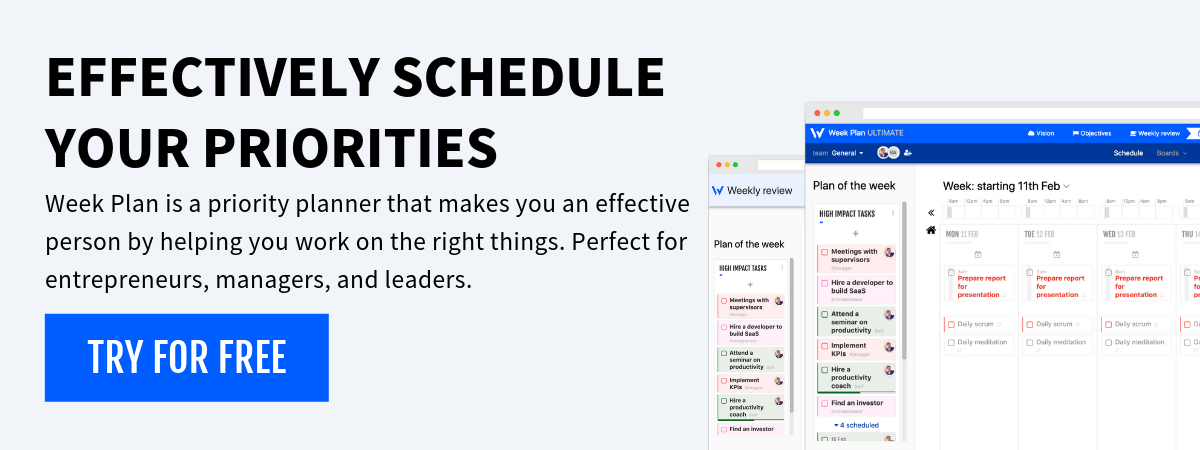J.D. Meier’s Agile Results System is a productivity methodology outlined in his book “Getting Results the Agile Way.” This approach combines principles of software development agility with personal productivity to create a flexible and results-oriented system for managing work and life tasks. The system emphasizes simplicity, adaptability, and the importance of results over processes, making it a powerful tool for anyone looking to enhance their effectiveness and achieve their goals more efficiently.
Core Concepts of the Agile Results System
The Agile Results System is based on a few core principles that help individuals and teams focus on achieving outcomes effectively. These principles include weekly and daily planning, setting three main tasks each day, and adopting a reflective practice to continuously improve productivity and outcomes.
The Rule of Three
One of the system’s foundational concepts is the Rule of Three, which encourages focusing on three outcomes to accomplish daily, weekly, and yearly. This rule helps to simplify decision-making and prioritize actions that lead to significant impacts.
The Five Keys to Agile Results
- Monday Vision: Define the top three outcomes you want to achieve by the end of the week every Monday.
- Daily Outcomes: Each day, determine three key results you aim to accomplish that align with your weekly vision.
- Friday Reflection: On Fridays, reflect on the three things that went well and three things that could be improved.
- Design Your Day: Plan your day in a way that aligns with your energy levels, leveraging your peak times for high-priority tasks.
- Hot Spots: Identify areas in your life that need more attention and balance your focus across work, personal health, and relationships.
Implementing the Agile Results System
1. Setting Up Your System
Utilize tools like a goal planner to set clear, achievable goals aligned with the Rule of Three. This helps to maintain focus and drive throughout the implementation of the Agile Results System.
2. Regular Planning and Review
Use a task planner to outline tasks and monitor their completion daily and weekly. This promotes a continuous loop of planning, action, and reflection.
3. Adapting to Changes
Remain flexible and adapt your plans as needed. The Agile Results System is designed to accommodate changes and pivot quickly in response to new information or priorities.
4. Leveraging Technology
Enhance productivity and tracking by integrating digital tools like a time planner to visualize how your time is spent relative to your planned tasks and outcomes.
Benefits of the Agile Results System
1. Increased Productivity
By focusing on essential tasks, productivity is naturally enhanced, leading to more significant achievements.
2. Improved Focus
The Rule of Three helps maintain focus on critical outcomes, reducing the overload of attempting too many tasks at once.
3. Greater Flexibility
Agile principles allow for adjusting plans swiftly and effectively, improving responsiveness to changes.
4. Enhanced Clarity
Weekly and daily planning provides clarity about what is important, helping to guide daily actions and decisions.
Applications and Examples
- Professional Development: Professionals use the Agile Results System to manage projects, prioritize tasks, and meet deadlines efficiently.
- Personal Goals: Individuals apply this system to personal goals such as fitness, learning new skills, or personal development projects.
Challenges and Considerations
The success of the Agile Results System depends heavily on the individual’s ability to maintain discipline in planning and reflection. It can also require a mindset shift from traditional task completion to a more outcome-focused approach, which might take time to adapt.
Conclusion
J.D. Meier’s Agile Results System offers a dynamic and flexible framework for achieving productivity and effectiveness in various aspects of life. By incorporating the principles of agility into personal productivity, individuals can manage their tasks more effectively and achieve their goals with greater precision. Tools like a productivity planner can be instrumental in supporting the implementation of this system, helping individuals and teams maximize their potential and realize their aspirations efficiently.

More Posts
How to improve your productivity through Calendar Blocking?
Every time at the end of the day you sit down and realize that your to-do list has been increasing rather than decreasing. It is one of the worst feelings to see your...
13 Tips to Overcome Task Avoidance and Stop Procrastination
Many people struggle with putting things off, not just because they’re lazy. It’s often a way to avoid stress or discomfort. Saying “I’ll do it later” can lead to a big pile of...
Best Task Management Software for Individuals
Managing daily tasks, personal projects, and deadlines can be an overwhelming experience. Task management software for individuals provides a strategic solution to this modern challenge. Designed to streamline and simplify the organization of...
7 Top Task Management Software for Teams
In the ever-expanding digital universe, team collaboration and organization are pivotal for success. Task management software for teams has become a lifesaver, streamlining processes and ensuring all tasks are timely. From sticky notes...